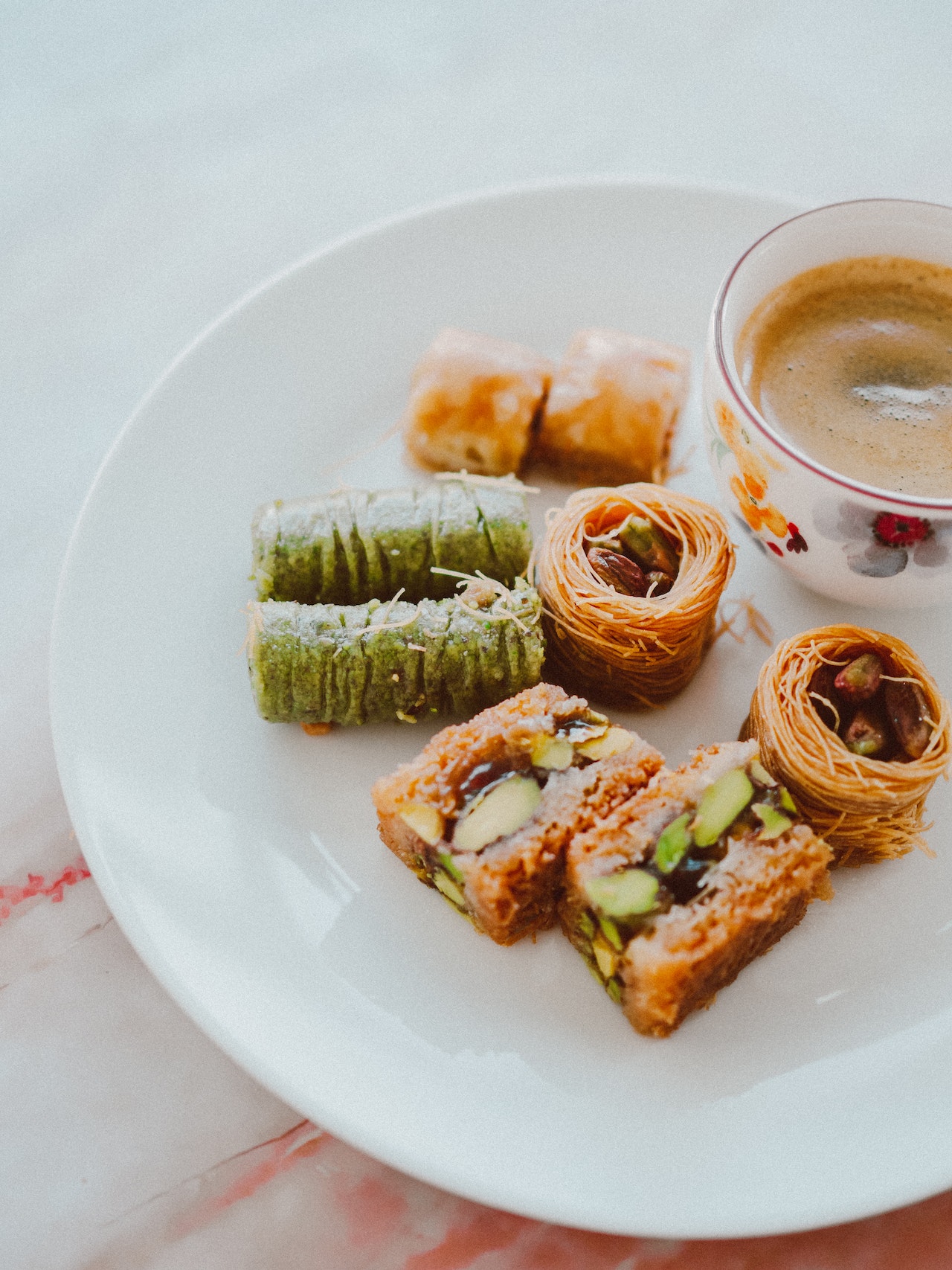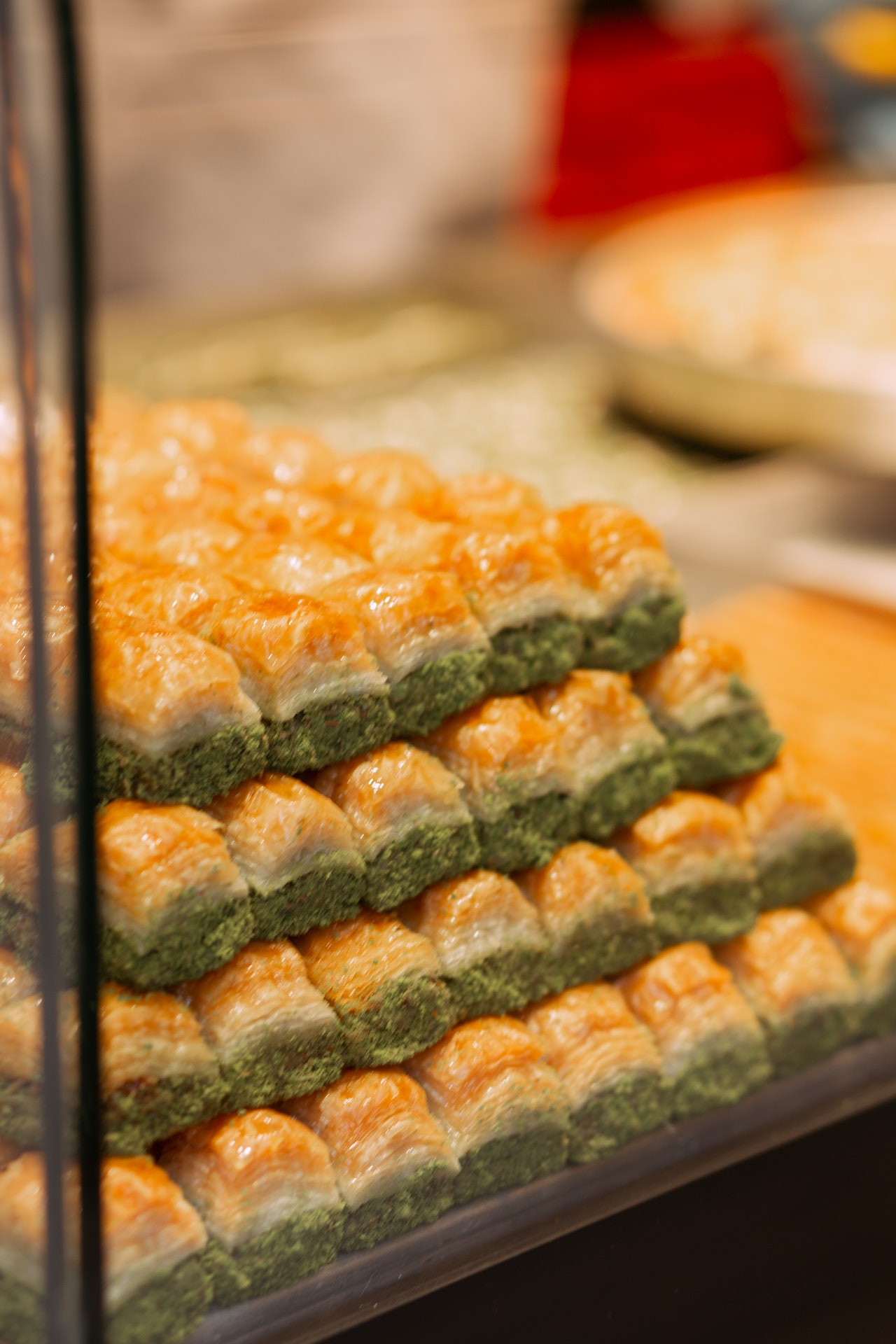When it comes to indulgent desserts, Turkish baklava stands in a league of its own. This delectable pastry, with its delicate layers of filo dough, finely chopped nuts, and sweet syrup, has been a beloved treat in Turkish cuisine for centuries. In this article, we embark on a tantalizing journey to explore the origins, unique characteristics, and cultural significance of Turkish baklava—a dessert that is as much a culinary masterpiece as it is a symbol of Turkish hospitality.
Origins and History
Although the exact origins of baklava are debated, it is widely believed to have originated in the imperial kitchens of the Byzantine Empire. Over time, the recipe traveled along the trade routes of the Ottoman Empire, becoming an iconic dessert throughout the region. Today, Turkish baklava is renowned worldwide for its intricate layers, sumptuous fillings, and luscious syrup.

Meticulous Craftsmanship
The art of making baklava is a labor of love that requires precision and skill. It starts with thinly rolled sheets of filo dough, made by stretching and layering the dough until it becomes translucent. The filling, typically a mixture of finely ground nuts, such as pistachios or walnuts, is generously sprinkled between the layers. The pastry is then carefully folded and cut into various shapes, often triangles or diamond patterns. Finally, it is baked to golden perfection and bathed in a fragrant syrup, which adds moisture and sweetness to every bite.
Distinctive Flavors and Textures
What sets Turkish baklava apart is its harmonious combination of flavors and textures. The layers of crisp, buttery filo dough provide a delicate crunch, contrasting beautifully with the rich, nutty filling. The finely ground nuts, often pistachios, add a distinct flavor that is both indulgent and satisfying. The syrup, typically made from a blend of honey, sugar, lemon juice, and water, infuses each layer with a subtle sweetness, tying all the elements together.
Cultural Significance
Turkish baklava is deeply rooted in Turkish culture and holds a special place in celebrations, family gatherings, and religious festivals. It is often shared with guests as a gesture of warm hospitality and is a staple dessert during important occasions like weddings and religious holidays, particularly Eid. Baklava symbolizes abundance, generosity, and the joy of coming together to savor life’s sweet moments.

Regional Variations
While the basic recipe for baklava remains consistent throughout Turkey, regional variations offer unique twists. In Gaziantep, a city renowned for its baklava, the use of local ingredients, such as Antep pistachios, elevates the flavors to new heights. In Istanbul, a style called “sarı burma” features thinner layers of dough and a lighter syrup, creating a delicate and refined version. Each region takes pride in its own distinct interpretation, contributing to the diversity and richness of Turkish baklava.
Appreciating Baklava
To truly appreciate the artistry of Turkish baklava, it is best enjoyed slowly and savored. With each bite, the layers of filo dough, nuts, and syrup harmonize to create a symphony of flavors that transport you to the heart of Turkish culinary heritage. Pair it with a cup of Turkish tea or strong black coffee to enhance the experience.
Turkish baklava is a sweet masterpiece that embodies the rich traditions and flavors of Turkish cuisine. Its intricate layers, exquisite fillings, and luscious syrup combine to create a dessert that is both indulgent and deeply satisfying.
